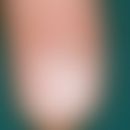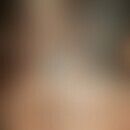Synonym(s)
HistoryThis section has been translated automatically.
The term "Autosomal recessive congenital ichthyosis" -ARCI-, refers to disorders formerly known as ichthyosis congenita.
DefinitionThis section has been translated automatically.
The group of autosomal recessive congenital (non-syndromic, non-bullous) ichthyoses (ARCI) is a rare, clinically, genetically and molecularly heterogeneous group of skin keratinization disorders already existing at birth, which historically has been clinically contrasted with ichthyosis vulgaris or X-linked recessive ichthyosis. The term"autosomal recessive congenital ichthyosis" - ARCI for short - was coined for this heterogeneous group (Oji V et al. 2009).
The group designation ARCI explicitly refers to the autosomal recessive non-syndromic congenital ichthyoses. The included description "non-syndromic" specifies for the ARCIs that the keratinization disorders are limited to the skin only. Malformation syndromes affecting other organs are excluded for this disease group. For example, Netherton syndrome, which also has congenital ichthyosiform erythroderma at birth, is explicitly not included under this term because this ichthyosis has a syndromal course later in life.
You might also be interested in
ClassificationThis section has been translated automatically.
The group of autosomal recessive congenital non-syndromic ichthyoses (ARCI) includes:
Harlequin ichthyosis (ARCI4B) OMIM:242500 (ABCA12) as a severe and possibly lethal keratinization disorder.
Lamellar ichthyosis (LI)/congenital ichthyosiform erythroderma (CIE) (LI/CI)
Name (mutation) Abbreviation OMIM identifier Gene
__________________________________________________________
- LI/ CIE with mutation in TGMI (ARCI 1 ) OMIM: 242300(TGM1)
- LI/ CIE with mutation in ALOX12B(ARCI 2) OMIM: 242100(ALOX12B)
- LI/ CIE with mutation in ALOXE3(ARCI 3) OMIM: 242100(ALOXE3)
- LI/ CIE with mutation in ABCA12(ARCI 4A) OMIM: 60127(ABCA12)
- LI/ CIE with mutation in CYP4F22(ARCI 5) OMIM: 604777(CYP4F22)
- LI/ CIE with mutation in NIPAL4 (ARCI 6) OMIM: 612281(NIPAL4)
- LI/ CIE with mutation in LIPN(ARCI 8) OMIM: 613943(LIPN)
- LI/ CIE with mutation in CERS3(ARCI 9) OMIM: 615023(CERS3)
- LI/ CIE with mutation in PNPLA1 (ARCI 10) OMIM: 615024(PNPLA1)
- LI/ CIE with mutation in ST14(ARCI 11) OMIM: 602400(ST14)
- LI/ CIE with mutation in CASP14(ARCI 12) OMIM: 617320(CASP14)
Self-improving congenital ichthyosis
- Self-improving congenital ichthyosis with mutation in TGM1 (SICI) ARCI1 (OMIM:242300) (TGM1)
- Self-improving congenital ichthyosis with mutation in ALOX12B (SICI) ARCI2 (OMIM:242100) (ALOX12B)
- Self-improving congenital ichthyosis with mutation in ALOXE3(SICI) ARCI3 (OMIM:606545) (ALOXE3)
Bathing suit ichthyosis with mutation in TGM1 (BSI) (SICI) ARC I3 (OMIM:242300) (TGMI)
Occurrence/EpidemiologyThis section has been translated automatically.
The group of autosomal recessive congenital ichthyoses is considerably rarer than e.g. ichthyosis vulgaris or X-linked recessive ichthyosis(XRI). Its estimated incidence is 1: 60,000 persons
EtiopathogenesisThis section has been translated automatically.
In all variants, terminal differentiation of the epidermis is disturbed, resulting in reduced barrier function and defects in lipid composition in the stratum corneum (Lefevre et al. 2006). The most common form of ARCI cases is due to a mutation in the transglutaminase 1 gene (see Autosomal recessive congenital ichthyosis with mutation in TGM1 below). Transglutaminase deficiency occurs in approximately 35-40% of all patients with ARCI. This constellation led to an older now outdated classification of autosomal recessive congenital ichthyosis with and without transglutaminase deficiency.
Another, rather rare form is based on a mutation in the gene ABCA12, which encodes a transport protein for fats. This defect is quite rare in German families. Other forms involve mutations in two lipoxygenase genes(ALOXE3 and ALOX12B) located in close proximity on the short arm of chromosome 17, which have functions in the lipid metabolism of the epidermis (7% of patients). Other mutations affect, among others, the cytochrome P-450 oxidase gene(CYP4F22) (8% of pat.) or the gene for ceramide synthetase 3(CERS3). The latter leads to ceramide deficiency in the skin (for further mutations see classification below).
The severity of ARCI varies widely. In lamellar ichthyosis with transglutaminase deficiency, a correlation between clinical severity and type of mutation can be established. This is not possible for other variants.
Clinical featuresThis section has been translated automatically.
Apart from Harlequin's ichthyosis (see there), a collodion membrane (clinically: collodion baby) is often present in ACRIs at birth.
Autosomal recessive congenital ichthyosiform erythroderma (CIE) is characterized by erythroderma, with superimposed fine white superficial semi-adherent scales. At birth, this group of patients usually presents with a collodion membrane (collodion baby). Palmoplantar keratoderma (see also palmoplantar keratoses) is a common finding, often with painful fissures and digital contractures. Nail dystrophies with grooving and subungual hyperkeratoses are described in half of the cases, including clock glass nails. Furthermore, ectropion, eclabium, involvement of the hairy scalp, and loss of eyebrows and eyelashes occur. These phenomena appear to be more common in autosomal recessive congenital ichthyosiform erythroderma than in the other phenotype of autosomal recessive congenital lamellar ichthyosis.
Autosomal recessive congenital lamellar ichthyosis: This designation is not used to refer to a distinct entity, but merely to a particular skin condition that can occur in all genetic variants of ACRIs. The scaling affects the entire body surface including the large flexural folds. The face and scalp are always involved in these congenital ichthyoses (ARCI). Erythema is absent or very discrete. Some affected individuals have scarring alopecia (secondary scarring due to adherent ichthyosis plates on the capillitium). The pattern of affection involving the large articular flexures distinguishes ARCI phenotypes from ichthyosis vulgaris and remains a leading differentiating feature.
The size and color of the scaling varies widely. In many patients, a rather fine and light brown scaling is detectable. However, thicker, plate-like and often very dark keratinization can also occur. The scales always consist of thin, superimposed horny lamellae. Due to this type of scaling, the clinical picture was also given the name "lamellar ichthyosis".
Hypohidrosis: The ability to sweat is reduced in many ARCI sufferers. This can lead to an increase in body temperature when outdoor temperatures are high. It is important to provide adequate cooling (e.g., by moist compresses or application of thermal spray to the face and neck), especially for infants during hot summer months. Vacation planning should take this into account. A tendency to dermatomycoses is conspicuous.
Dryness of the skin often causes ectropion, less commonly eclabium. Palms and soles are frequently affected as well. They show either hyperlinearity or palmoplantar keratoses. Finger and toenails may be thickened or show other growth disorders. Some patients show clock glass nails.
DiagnosisThis section has been translated automatically.
Clinic with type of affection pattern, determination of genotype.
Currently, it is believed that there are at least 10 different genotypes in autosomal recessive congenital ichthyosis (ARCI). It is likely that more will be added. Through gene-panel diagnostics in specialized laboratories such as the Institute of Human Genetics at the University of Freiburg, about 90% of all ARCI cases can be genetically clarified today. At present, this is not yet possible for 10%.
Measurement of transglutaminase 1 activity (seeTGM1 gene) in the skin (direct immunofluorescence detection) no longer plays a decisive role and has been replaced by molecular genetic diagnostics from the blood.
Differential diagnosisThis section has been translated automatically.
Congenital autosomal dominant lamellar ichthyosis
LiteratureThis section has been translated automatically.
- Okiyama M et al (2003) The clinical spectrum of nonbullous congenital ichthyosiform erythroderma and lamellar ichthyosis. Clin Exp Derm 28: 235-240
- Eckl K.-M et al (2009) Molecular analysis of 250 patients with autosomal recessive congenital ichthyosis: evidence for mutation hotspots in ALOXE3 and allelic heterogeneity in ALOX12B. J Invest Derm 129: 1421-1428.
- Eckl K-M et al (2005) Mutation spectrum and functional analysis of epidermis-type lipoxygenases in patients with autosomal recessive congenital ichthyosis. Hum Mutat 26: 351-361
- Fischer J et al (2000) Two new loci for autosomal recessive ichthyosis on chromosomes 3p21 and 19p12-q12 and evidence for further genetic heterogeneity. Am J Hum Genet 66: 904-913.
- Fischer J (2009) Autosomal recessive congenital ichthyosis. J Invest Derm 129: 1319-1321.
- Harting M et al (2008) Self-healing collodion membrane and mild nonbullous congenital ichthyosiform erythroderma due to 2 novel mutations in the ALOX12B gene. Arch Derm 144: 351-356.
- Jobard F et al (2002) Lipoxygenase-3 (ALOXE3) and 12(R)-lipoxygenase (ALOX12B) are mutated in non-bullous congenital ichthyosiform erythroderma (NCIE) linked to chromosome 17p13.1. Hum Molec Genet 11: 107-113.
- Lefevre C et al (2006) Mutations in a new cytochrome P450 gene in lamellar ichthyosis type 3. Hum. Molec. Genet. 15: 767-776.
- Lesueur F et al. (2007) Novel mutations in ALOX12B in patients with autosomal recessive congenital ichthyosis and evidence for genetic heterogeneity on chromosome 17p13. J Invest Derm 127: 829-834.
- Oji V et al. (2009) Revised nomenclature and classification of inherited ichthyoses: results of the first ichthyosis consensus conference in Soreze 2009. J Am Acad Derm 63: 607-641.
- Vahlquist A et al. (2010) Genotypic and clinical spectrum of self-improving collodion ichthyosis: ALOX12B, ALOXE3, and TGM1 mutations in Scandinavian patients. J Invest Derm 130: 438-443.
- Yu Z et al (2003) The lipoxygenase gene ALOXE3 implicated in skin differentiation encodes a hydroperoxide isomerase. Proc Nat Acad Sci 100: 9162-9167.
Incoming links (7)
ALOX12B Gene; Autosomal recessive ichthyosis lamellosa with transglutaminase deficiency; CASP14 Gene ; Collodion baby; Harlequin-ichthyosis; Self-improving congenital ichthyosis; TGM1 GenE;Outgoing links (22)
ABCA12 Gene; ALOX12B Gene; ALOXE3 Gene; Autosomal recessive congenital ichthyosis with mutation in TGM1 ; Bathing suit ichthyosis; CASP14 Gene ; CERS3 Gene; Collodion baby; CYP4F22 Gene; Erythrodermia; ... Show allDisclaimer
Please ask your physician for a reliable diagnosis. This website is only meant as a reference.





